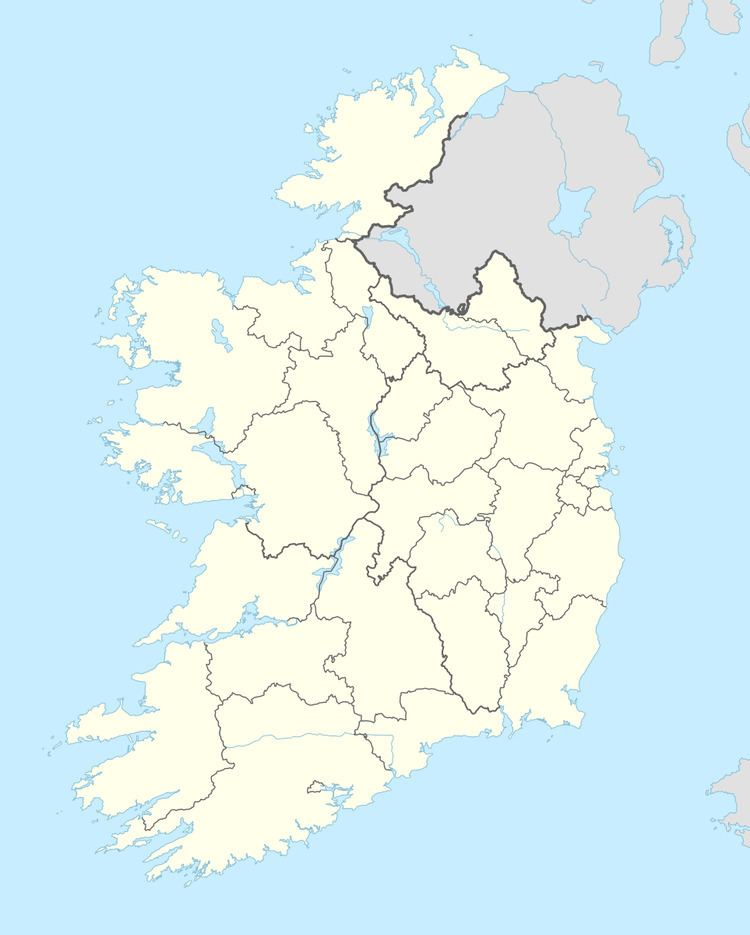Time zone WET (UTC+0) Elevation 48 m | Irish Grid Reference S726155 Local time Tuesday 3:45 PM | |
 | ||
Weather 9°C, Wind S at 21 km/h, 97% Humidity | ||
Killesk campile new ross co wexford detached house for sale
Campile (Irish: Ceann Phoill, meaning "head of the creek";(officially spelt Ceann Poill)) is a small village situated in the south of County Wexford, Ireland. It is nine miles (14 km) outside the town of New Ross. Nearby exists the ruins of an old Cistercian abbey of Dunbrody.
Contents
- Killesk campile new ross co wexford detached house for sale
- Map of Campile Co Wexford Ireland
- History
- Rail transport
- Bus transport
- Sport
- Education
- References
Map of Campile, Co. Wexford, Ireland
History
The first mention of Campile, then known as Ceann Phoill, was in the Annals of Inisfallen dating from 937 AD. The annals record a group of Jewish migrants who arrived in Campile after sailing up the Pill river in their hand made ox-hide coracles. The Jewish settlers set up a small but prosperous community in Ballykeeroge about 2 kilometers from the village of Campile. Although some of the old Jewish names still exist in the village and surrounding hinterland, the early settlement was knocked down in the mid 20th Century to make way for a landfill site which still exists to this very day.
During the Irish Rebellion of 1798, a Rebel camp was located on nearby Slieve Coillte hill.
Ireland remained officially neutral during World War II. However, on 26 August 1940, the German Luftwaffe bombed Campile in broad daylight. Three women were killed – Mary Ellen Kent (30), her sister Catherine Kent (26), both from Terrerath, and Kathleen Hurley (27) from Garryduff. Four German bombs were dropped on the creamery and restaurant sections of Shelburne Co-op on that day. The railway was also targeted by the bombers. The attack has never been fully explained, although there are numerous theories as to why the bombing occurred.
On the occasion of the 50th anniversary of the bombing, a plaque was erected on the co-op walls in memory of the three women.
Arthur O' Connor's book Campile is a personal tale of German spies engaged in counter-espionage to stop the building of Harland and Wolff's proposed and recently declassified deep-sea port just outside Campile. Harland and Wolff is based in Belfast.
The local Harts bar and lounge contains many artifacts relating to the bombing. The description and history related to each artifact can be found in an old leather-bound book kept underneath the counter in the adjoining sweet shop.
Rail transport
Campile railway station opened on 1 August 1906. On 21 July 2010 Irish Rail announced that it would suspend its rail service through Campile, and this took effect after the operation of the evening train on 18 September 2010. Before that date, it was served Mondays to Saturdays by one passenger train in each direction.
Bus transport
Prior to the cessation of the rail service Campile's Bus Éireann service was infrequent consisting of the commuter route between Duncannon and Waterford city via New Ross and on certain days by a cross-country bus to Wexford. After the rail service ceased the bus service was enhanced significantly. A revised Bus Éireann route 370 service came into effect from Monday 20 September 2010.
Sport
The local sports teams for Campile and the surrounding area are Campile United in Soccer who play in the Wexford soccer league and Horeswood who play in the Wexford Gaelic football and Hurling leagues. Near the railway station there is an open air 60x30 handball alley.
Education
Scoil Mhuire is situated in the townland of Ballinamona, Campile, Co. Wexford, on the New Ross-Campile road. It is a central school for the Parish of Sutton's, which is divided into Horeswood Parish and Ballykelly Parish. In 1979, four schools in the parish amalgamated into Scoil Mhuire. These four schools were Aclare NS, Ballykelly NS, Horeswood NS, and Killesk NS.
